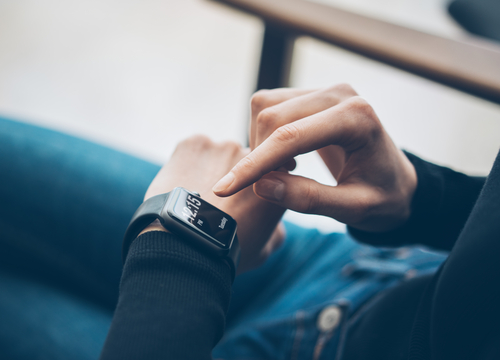Wearable Technology Can Help Monitor Mobility Patterns in Late-Onset Pompe, Study Shows

Wearable technology that quantifies daily physical activity, such as FitBit One, can help determine mobility patterns and evaluate the clinical status of people with late-onset Pompe disease, a study shows.
The study, “Mobility assessment using wearable technology in patients with late-onset Pompe disease,” was published at npj Digital Medicine.
Pompe is a progressive neuromuscular disorder caused by genetic mutations in the GAA gene. These mutations result in impaired glycogen degradation and the accumulation of toxic molecules.
The disease has a variable onset, meaning it can first manifest itself during early infancy or later in life. Regardless of when it does, the presenting symptom in almost all patients is skeletal muscle weakness. This is demonstrated by difficulty in running, performing sports, climbing stairs, walking, rising from an armchair, or rising from a lying position.
Due to the disease’s progressive nature, people with Pompe eventually will become dependent on walking aids or wheelchairs.
Researchers from Sanofi Genzyme, in collaboration with PatientsLikeMe, an online support group, conducted a study to evaluate mobility progression patterns in people with late-onset Pompe disease.
The study enrolled 29 adults, recruited through the Acid Maltase Deficiency Association and from the existing membership of PatientsLikeMe. Among the participants, 17% required ambulatory help and 38% required breathing assistance. All participants received a FitBit One device to record their daily physical activity for six to eight weeks. This data was compared with general and other chronic disease population-based estimates from data sources publicly available.
In general, the people with Pompe were less mobile compared with the general population, logging a mean of 3,145 steps versus 5,117 steps, according to pedometer-based step count. They also were less ambulatory when compared with patients with other progressive disorders, such as multiple sclerosis, who logged a mean of 4,393 steps, and chronic obstructive pulmonary disease.
Next the team evaluated participants’ mobility patterns according to their disease history and status, as self-reported through the Pompe Disease Symptom Scale. They found that mobility varied significantly by age, diagnostic delays, disease duration, ambulatory status, and “fatigue and pain” score, among other factors.
Individuals aged 20 to 39 years showed higher mean step counts compared with older patients (ages 40 to 69). Those who were more quickly diagnosed, who had the disease for less time, and who did not use walking aids also were significantly more mobile.
Patients who reported more fatigue and pain were found to have less daily step counts, and reduced physical activity.
“This study illustrates a new approach to measure mobility in late-onset Pompe disease patients and establishes a framework for future outcomes data collection,” the researchers said.
“With advancement in technology and integrated data systems, we anticipate that wearable technology linked with patient self-reports will enable better characterization of Pompe patients and aid physicians in clinical decision making,” they said.
The investigators said there was a need for better standardization of data moving forward.
“Future studies with longer follow-up periods are required to expand upon this methodology and potentially monitor patients’ health status over time,” the researchers said.






